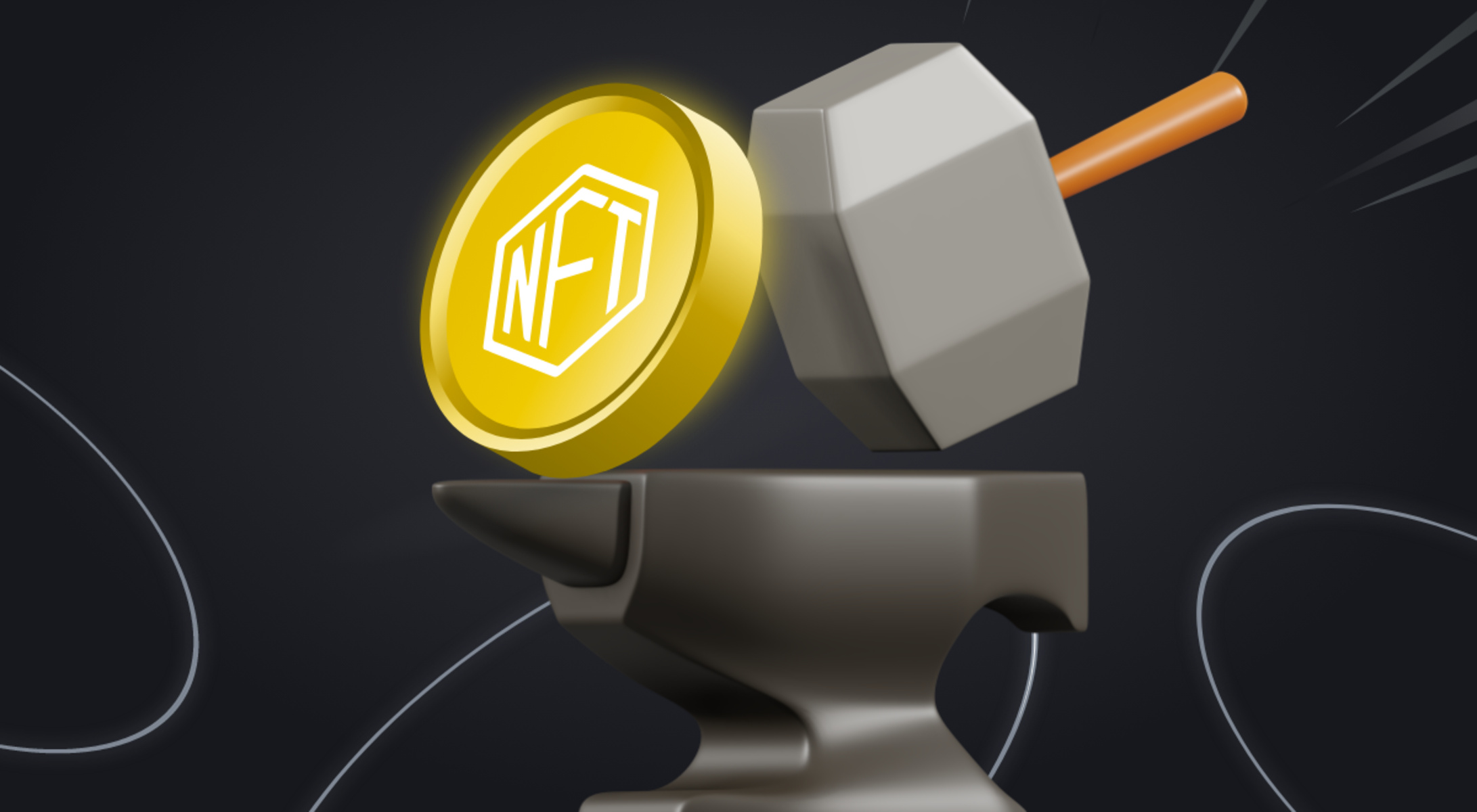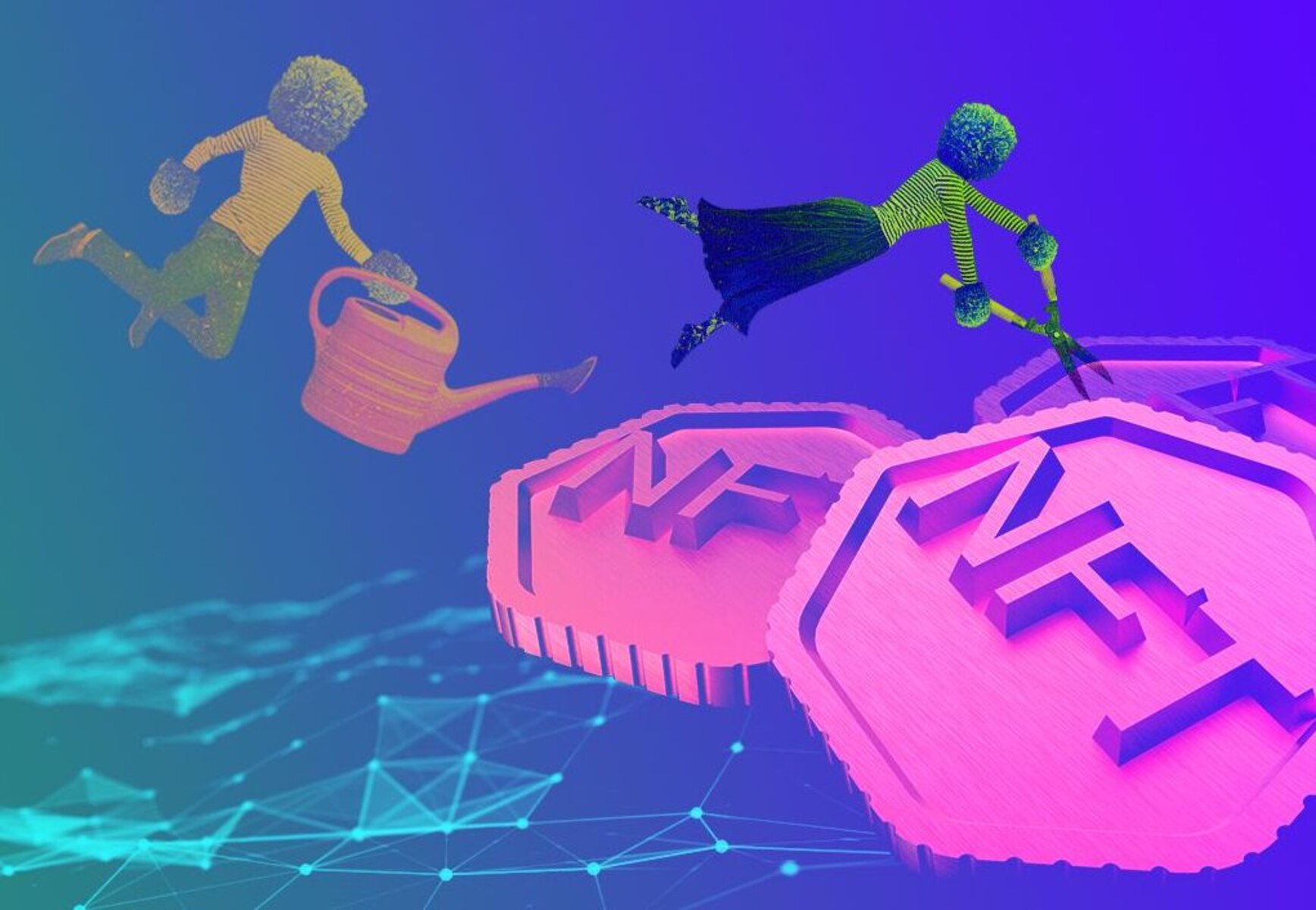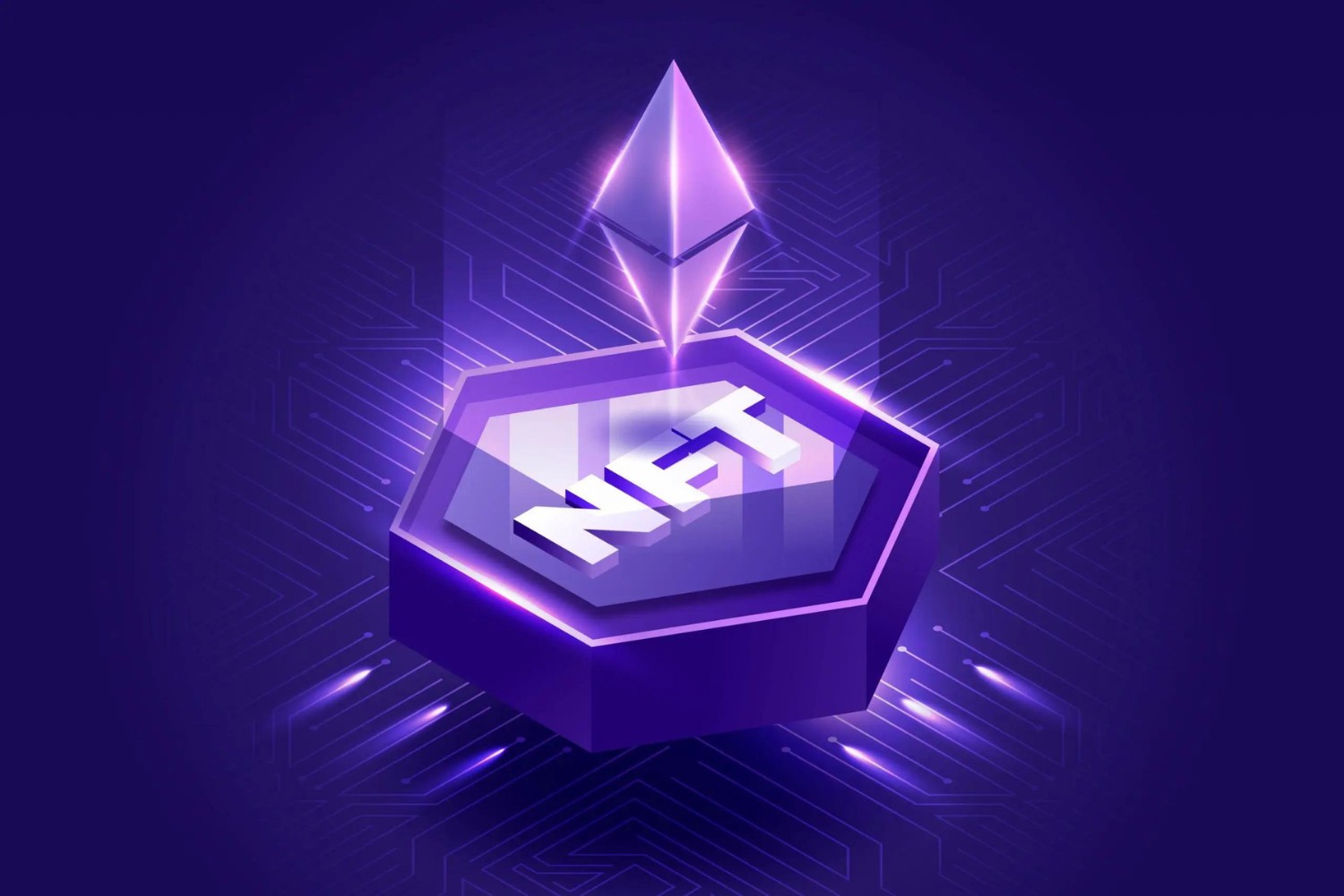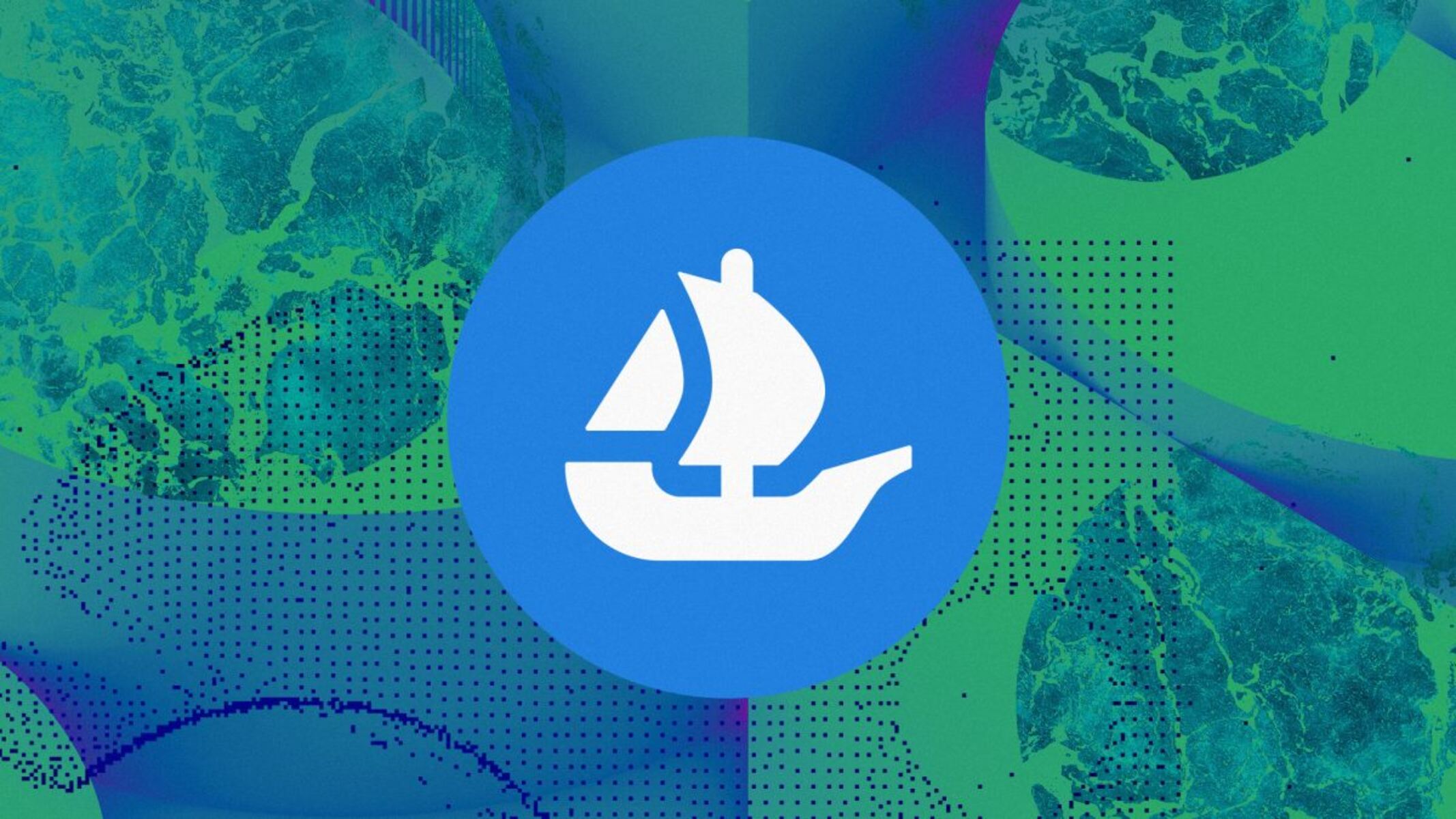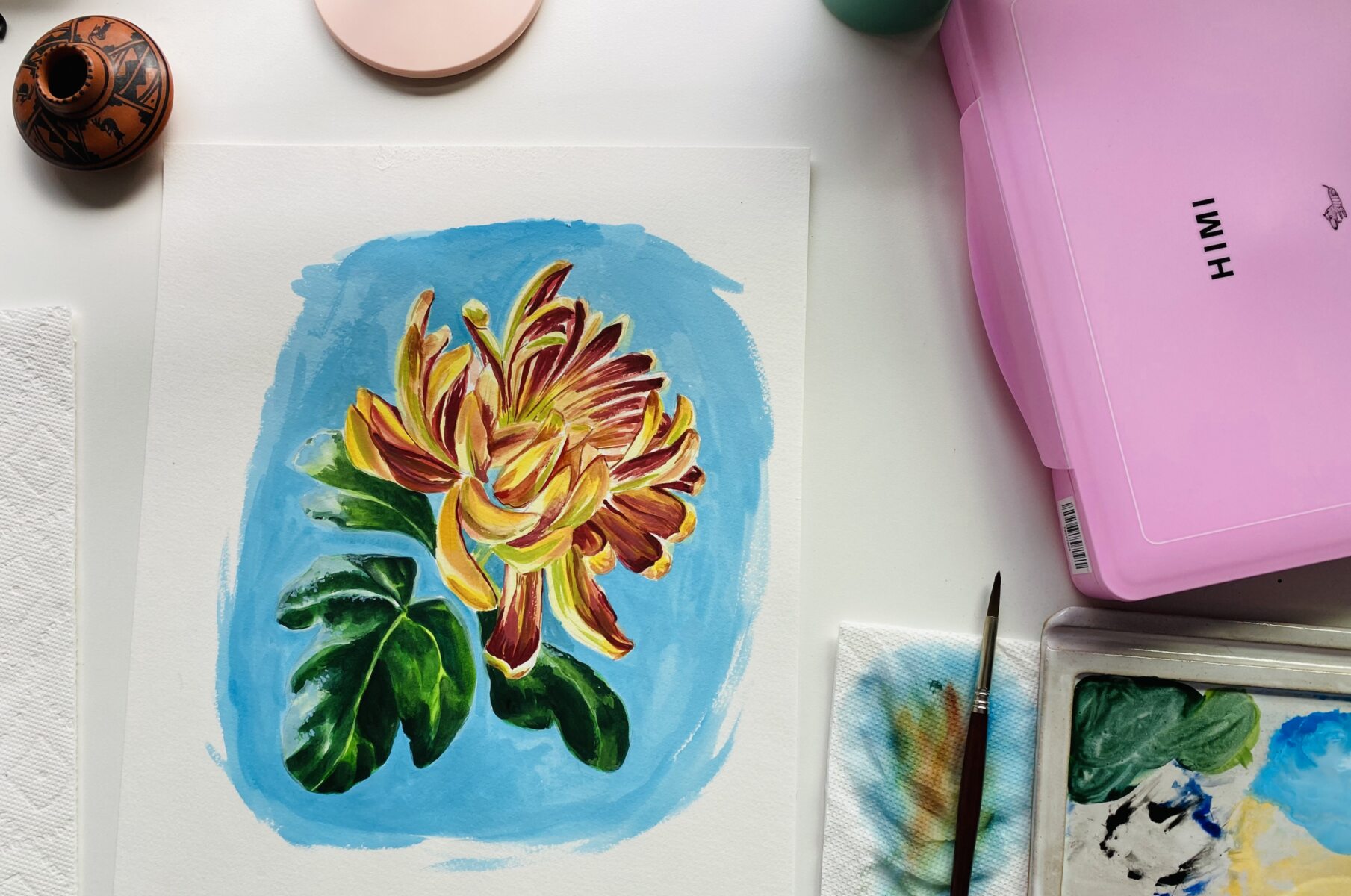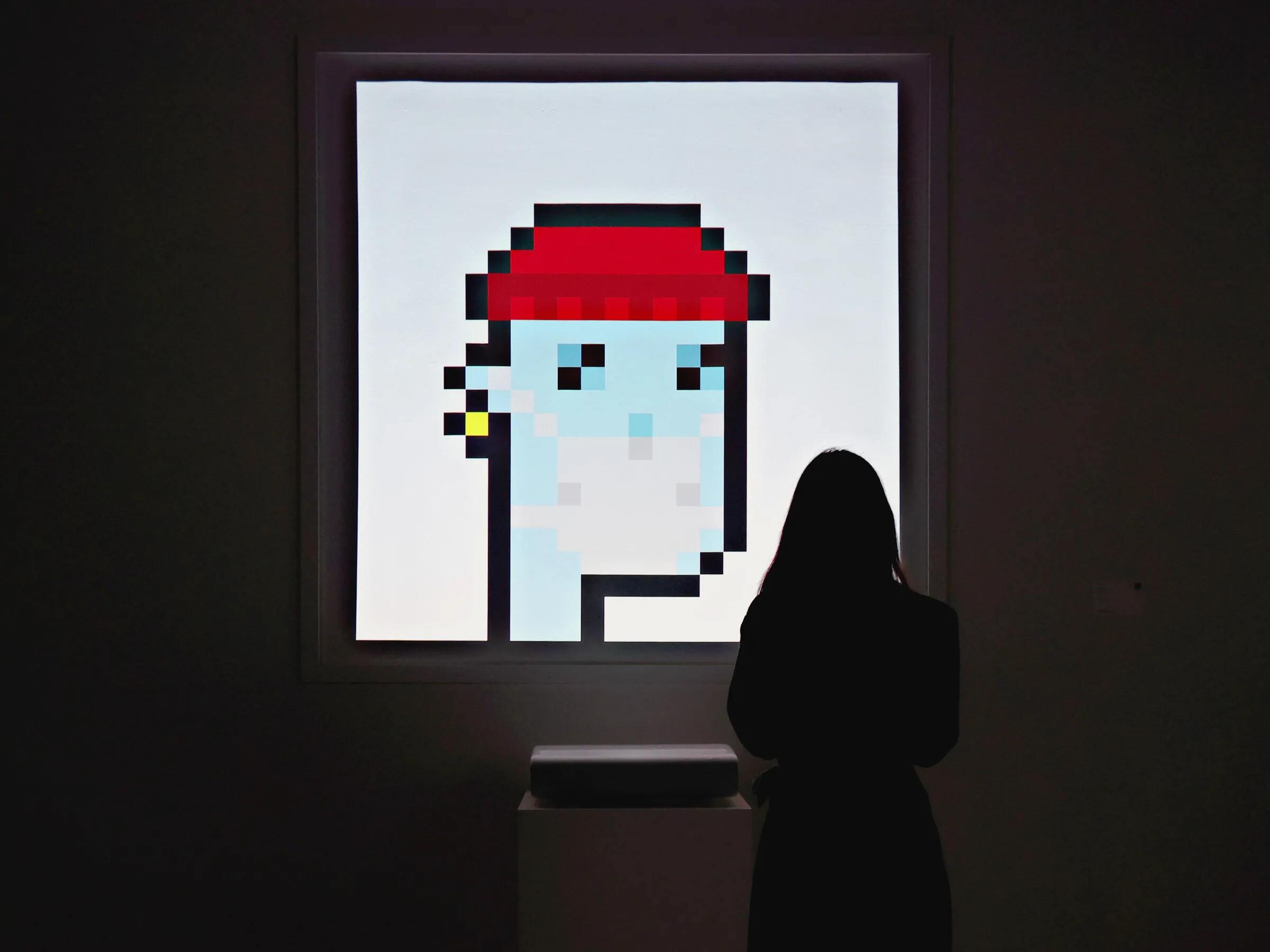Introduction
Welcome to the exciting world of NFTs! In recent years, non-fungible tokens (NFTs) have gained immense popularity and have become a significant part of the digital art and collectibles market. But what exactly is an NFT, and what does it mean to “mint” an NFT?
An NFT is a unique digital asset that is stored on a blockchain. Unlike cryptocurrencies such as Bitcoin or Ethereum, which are interchangeable and hold the same value, NFTs are indivisible and have distinct characteristics that set them apart. These characteristics make them ideal for representing ownership of digital content such as artwork, music, videos, virtual real estate, and more.
Minting, in the context of NFTs, refers to the process of creating a new NFT. It is the digital equivalent of producing a unique physical item, like a work of art or a limited-edition collectible.
In this article, we will explore what it means to mint an NFT, how the process works, and the reasons why people choose to mint their own NFTs. We will also discuss the benefits and risks of minting NFTs and provide an overview of popular platforms for minting these unique digital assets.
So, if you’re ready to dive into the fascinating world of NFTs and discover the art of minting, let’s get started!
What is an NFT?
An NFT, short for non-fungible token, is a digital asset that represents ownership or proof of authenticity of a unique item or piece of content. Unlike cryptocurrencies like Bitcoin or Ethereum, which have identical copies and can be exchanged on a one-to-one basis, NFTs are one-of-a-kind and cannot be exchanged on a like-for-like basis.
Think of NFTs as digital certificates of authenticity that provide undisputed proof of ownership, originality, and scarcity. NFTs are built using blockchain technology, which ensures transparency, security, and immutability.
NFTs have gained significant attention in recent years, particularly in the art world. Artists can create digital artwork, videos, music, and other forms of digital content and then tokenize them as NFTs. This allows artists to sell their creations directly to collectors without the need for intermediaries like art galleries or auction houses.
What makes NFTs unique is their ability to store metadata, or additional information, about the asset they represent. This metadata includes details such as the creator’s name, the date of creation, the edition number (if applicable), and even links to external content like the artist’s website or social media profiles.
When someone purchases an NFT, they receive a unique token that serves as proof of their ownership. This token is stored on a blockchain, which is a decentralized and distributed digital ledger that records transactions. The blockchain ensures that the ownership history of an NFT is publicly verifiable and cannot be manipulated or tampered with.
It’s important to note that owning an NFT does not mean owning the copyright or exclusive rights to the underlying content. The creator still retains those rights, but the NFT owner possesses a token that proves their ownership of a specific digital asset.
NFTs have expanded beyond the art world and are now used in various industries. They have made their way into gaming, virtual reality, sports memorabilia, and even digital real estate. The possibilities for NFTs are virtually limitless, and their impact on the digital economy continues to grow.
In the next section, we will delve into the process of minting an NFT and how it all works.
What is Minting?
Minting, in the context of NFTs, refers to the process of creating a new non-fungible token. It is the digital equivalent of producing a unique physical item, such as a work of art or a limited-edition collectible.
When an artist, creator, or individual decides to mint an NFT, they are essentially “minting” a one-of-a-kind digital asset that can be bought, sold, and owned on the blockchain.
The process of minting involves taking a piece of digital content or artwork and attaching it to a unique token on a blockchain platform. This token serves as a digital certificate of authenticity and ownership.
During the minting process, the creator usually defines certain attributes for their NFT, such as the title, description, edition number (if applicable), and any additional metadata they want to include. This metadata provides valuable information about the NFT and enhances its overall value and appeal to potential buyers.
The minting process typically requires using a platform or marketplace that supports NFT creation and the associated blockchain network. Different platforms have different requirements and procedures for minting NFTs, so it’s important to choose one that suits your needs and preferences.
After the NFT is minted, it is made available for sale or auction on the chosen platform. Potential buyers can then bid on or purchase the NFT using cryptocurrency or other accepted forms of payment.
Once a buyer acquires an NFT, they become the official owner of that unique digital asset. The ownership details, including the transaction history and the current owner, are recorded on the blockchain, ensuring transparency and immutability.
Minting an NFT gives creators the opportunity to monetize their digital creations directly, without the need for intermediaries or traditional gatekeepers. It offers a decentralized and inclusive platform where artists, musicians, writers, and other creators can showcase their work and connect with a global audience.
Now that we understand the concept of minting, let’s explore how the process of minting an NFT actually works.
How does Minting an NFT Work?
Minting an NFT involves a series of steps that culminate in the creation and listing of a unique digital asset on a blockchain platform. Here’s a breakdown of the general process:
- Select a Platform: Choose an NFT marketplace or platform that supports the creation and minting of NFTs. Popular platforms include OpenSea, Rarible, and SuperRare. Each platform has its own requirements, fees, and features, so it’s important to explore options and find the one that fits your needs.
- Prepare Your Content: Gather the digital content you want to tokenize as an NFT. This can include digital artwork, music files, videos, or any other unique digital creation. Ensure that your content meets the requirements and guidelines set by the chosen platform.
- Connect Your Wallet: Most NFT platforms require users to connect their digital wallets to the platform. These wallets, such as MetaMask or Trust Wallet, allow users to store and manage their cryptocurrencies and NFTs. Connect your wallet to the chosen platform to facilitate the minting process.
- Define NFT Details: Provide information about your NFT, including the title, description, edition number (if applicable), and any additional metadata you want to include. This metadata can enhance the value and appeal of your NFT to potential buyers.
- Set a Price or Auction: Choose whether you want to list your NFT for a fixed price or set it up for auction. Fixed prices allow for immediate purchases, while auctions allow potential buyers to bid on your NFT over a specified period.
- Pay Fees and Mint: Depending on the platform, you may need to pay fees to cover transaction costs, listing fees, or gas fees (transaction fees on the blockchain network). Once the fees are paid, initiate the minting process, which will generate a unique token representing your NFT.
- Confirm and List: Review the details of your minted NFT and ensure everything is accurate. Once confirmed, list your NFT on the marketplace for potential buyers to discover and purchase.
It’s important to note that each platform may have slight variations in the minting process. Additionally, the process may differ if you decide to create your own custom smart contract for minting NFTs instead of using a pre-existing platform.
Keep in mind that minting an NFT is just the beginning. Once your NFT is listed, you will need to promote it, engage with potential buyers, and navigate the world of NFT marketplaces to increase its visibility and chances of selling.
Now that we have covered the process of minting, let’s explore the motivations behind why someone may want to mint an NFT.
Why Would Someone Want to Mint an NFT?
Minting an NFT offers a range of opportunities and advantages for creators, artists, and collectors. Here are some of the main reasons why individuals may choose to mint an NFT:
- Ownership and Authenticity: Minting an NFT provides an indisputable proof of ownership and authenticity for digital content. It allows creators to establish their authorship and guarantees that their work cannot be copied or replicated.
- Monetization: NFTs offer a way for creators and artists to monetize their digital creations directly, without relying on traditional intermediaries. By minting an NFT and selling it, they can earn income from their artwork, music, or other digital assets.
- Exclusivity and Scarcity: Through the minting process, creators can designate their NFTs as limited editions or unique one-of-a-kind pieces. This exclusivity and scarcity can make the NFTs more desirable and potentially increase their value in the market.
- Royalties and Secondary Sales: When creators mint an NFT, they can embed smart contracts that allow them to earn royalties on future sales of the NFT. This provides ongoing revenue even after the initial sale, enabling artists to benefit from the increased value of their work over time.
- Community Engagement: Minting an NFT allows creators to engage directly with their audience and build a community around their work. Collectors and fans can support their favorite artists by purchasing their NFTs, creating a direct and meaningful connection.
- Tokenization of Assets: NFTs enable the tokenization of various assets beyond artwork, such as virtual real estate, in-game items, or even event tickets. Minting these assets as NFTs provides a new way of owning and trading virtual possessions.
- Market Exposure: For artists and creators who are looking to expand their reach and gain visibility in the digital art and collectibles market, minting an NFT can open doors to new opportunities, collaborations, and partnerships.
NFTs have created a paradigm shift in the way digital content is produced, distributed, and valued. They provide creators with unprecedented control over their work and offer collectors a chance to own unique, digital assets in a secure and transparent manner.
While the NFT market has seen tremendous growth, it’s important to recognize that there are also risks associated with minting and investing in NFTs, which we will explore in the next section.
Benefits of Minting an NFT
Minting an NFT comes with several benefits for both creators and collectors. Let’s explore some of the advantages that come with minting an NFT:
- Ownership and Authenticity: NFTs provide a verifiable proof of ownership and authenticity for digital content. Minting an NFT ensures that the creator’s work is protected and cannot be duplicated or tampered with.
- Direct Monetization: Minting an NFT allows creators to monetize their digital creations directly, without relying on traditional intermediaries. They can sell their NFTs to collectors and earn income without incurring high commission fees.
- Smart Contract Capabilities: NFTs can be embedded with smart contracts that allow creators to earn royalties on future sales. This feature ensures that creators continue to benefit from the increased value of their work, even after the initial sale.
- Scarcity and Exclusivity: By minting limited edition NFTs or unique one-of-a-kind pieces, creators can create a sense of scarcity and exclusivity. This can increase the perceived value of their NFTs and attract collectors who appreciate rarity.
- Global Reach: The digital nature of NFTs allows creators to reach a global audience. Minting an NFT provides an opportunity to connect with collectors and fans from around the world, expanding the creator’s reach and exposure.
- Supporting Artists and Creators: By purchasing NFTs, collectors directly support artists and creators. The sale of NFTs provides creators with a new revenue stream, enabling them to continue producing their art and pursuing their creative endeavors.
- Community Engagement: Minting an NFT can foster a sense of community and engagement. Collectors and fans of the creator’s work can connect with each other, participate in discussions, and share their enthusiasm for the NFTs they own.
- Ownership History Transparency: The use of blockchain technology ensures transparency in the ownership history of NFTs. The transaction records are publicly verifiable, providing both creators and collectors with a trustworthy and immutable record of ownership.
These benefits have contributed to the rapid growth and popularity of NFTs across various industries, from art and music to gaming and virtual reality. However, it’s essential to consider the risks associated with NFTs, which we will discuss in the next section.
Risks of Minting an NFT
While minting an NFT brings exciting opportunities, it’s important to be aware of the potential risks involved. Here are some risks to consider:
- Volatility and Market Fluctuations: The value of NFTs can be highly volatile, with prices fluctuating rapidly. The speculative nature of the market means that the value of an NFT can rise or fall dramatically, which may impact the financial returns for both creators and collectors.
- Lack of Regulation and Standards: The NFT market is still relatively new and lacks clear regulations and industry standards. This can lead to uncertainty and potential issues with copyright infringement, ownership disputes, and fraudulent activities.
- Environmental Concerns: The creation and trading of NFTs require significant energy consumption, predominantly due to the underlying blockchain technology. This can contribute to carbon emissions, raising concerns about the environmental impact of NFTs.
- Counterfeit and Plagiarism: Despite the claim of authenticity, NFTs can still be subject to counterfeit and plagiarism. It’s crucial for collectors to research and verify the legitimacy of an NFT and ensure that the creator is the rightful owner of the digital artwork or content.
- Market Saturation: As the popularity of NFTs continues to grow, the market can become saturated with a vast number of NFTs. This saturation may make it challenging for creators to stand out and for collectors to find value in a crowded marketplace.
- Technological Risks: NFTs rely on blockchain technology, which is still evolving and can face technical issues or vulnerabilities. This includes potential security breaches, hacking attempts, or glitches that could impact the integrity and value of NFTs.
- Falling Interest and Hype: The hype surrounding NFTs may fade over time, potentially leading to a decline in interest from collectors and a decrease in demand for NFTs. This could affect the market value of previously minted NFTs.
It’s important to perform thorough research and due diligence before minting or investing in NFTs. Understand the risks involved and consider factors such as the reputation and credibility of the platform, the demand for the specific type of NFT, and the long-term viability of the digital content or artwork being tokenized.
While there are risks involved, many individuals find the benefits and potential rewards of minting NFTs to be compelling. The decision to mint an NFT should be made based on individual circumstances, goals, and risk tolerance.
In the next section, we will explore the process of minting an NFT in more detail, including the necessary steps to bring your digital creation to the blockchain.
How to Mint an NFT
Minting an NFT involves following a series of steps on an NFT platform or marketplace. Here’s a general guide on how to mint an NFT:
- Select an NFT Platform: Choose a platform or marketplace that supports the minting of NFTs. Popular options include OpenSea, Rarible, and Mintable. Consider factors such as fees, user interface, community, and the platform’s compatibility with your desired blockchain network.
- Create an Account and Connect a Wallet: Sign up for an account on the chosen platform and connect a compatible digital wallet. Common wallets include MetaMask, Trust Wallet, or Coinbase Wallet. Ensure that your wallet is funded with the required cryptocurrency for transactions.
- Prepare Your Content: Gather the digital content or artwork you want to mint as an NFT. Ensure the files meet the platform’s guidelines and specifications. Supported formats may include images (JPEG, PNG), videos (MP4, GIF), or audio files.
- Upload and Customize Your NFT: Use the platform’s interface to upload your digital content. Provide details such as the title, description, and any other metadata that enhances the value or uniqueness of your NFT. Some platforms may allow you to customize additional attributes or special features.
- Set a Price or Auction: Determine the price for your NFT or choose to set it up for auction. If setting a fixed price, specify the amount of cryptocurrency you wish to receive. For auctions, set a starting bid, a duration, and any reserve price if applicable.
- Pay Fees and Mint: NFT platforms typically charge fees for minting and listing an NFT. This can include gas fees, which cover the transaction costs on the blockchain network, and platform-specific fees. Ensure you have enough funds in your wallet to cover these fees.
- Review and Publish: Double-check all the information and details of your NFT before publishing it. Review the terms and conditions of the platform and confirm that you are ready to proceed with minting your NFT.
- Promote Your NFT: Once your NFT is minted and listed, it’s essential to promote it to attract potential buyers. Utilize social media, online communities, and platforms dedicated to NFTs to showcase your creation and generate interest.
Remember to conduct thorough research and read the guidelines provided by the platform you choose. Each platform may have variations in their minting process and requirements. Take the time to understand the platform’s marketplace dynamics, community engagement, and reputation to maximize the visibility and potential value of your minted NFT.
Now that you understand the steps involved in minting an NFT, let’s explore some popular platforms that you can use for this process.
Popular Platforms for Minting NFTs
As the popularity of NFTs continues to grow, there are several platforms available for minting and trading these unique digital assets. Here are some of the most popular platforms:
- OpenSea: OpenSea is one of the largest and most well-known NFT marketplaces. It supports the minting and trading of various types of NFTs, including artwork, collectibles, virtual land, and more. OpenSea operates on the Ethereum blockchain, making it compatible with Ethereum-based wallets and tokens.
- Rarible: Rarible is a decentralized marketplace that allows creators to easily mint and sell NFTs. It offers customizable features and allows creators to retain royalties on secondary sales. Rarible also operates on the Ethereum blockchain.
- SuperRare: SuperRare is a curated NFT marketplace that focuses on digital artwork. It prioritizes high-quality, limited-edition pieces from talented artists. Minting on SuperRare requires an application process, ensuring a selective and exclusive collection of NFTs.
- Nifty Gateway: Nifty Gateway is an NFT platform that focuses on digital art and collectibles. It offers a seamless user experience and has gained attention for hosting NFT drops from well-known artists and brands. Nifty Gateway operates on the Ethereum blockchain and supports various payment methods.
- Foundation: Foundation is an invite-only NFT platform that emphasizes the curation of digital art. It showcases works from renowned artists and incorporates an auction system. Foundation operates on Ethereum and provides a unique and exclusive experience for collectors and creators.
- Atomic Market: Atomic Market is a platform built on the WAX blockchain that specializes in digital collectibles and virtual assets. It offers a user-friendly interface, low transaction fees, and supports various blockchain networks, making it accessible to a wide range of users.
- Ghost Market: Ghost Market is a cross-chain NFT marketplace that operates on multiple blockchains, including Ethereum, Binance Smart Chain, and Flow. It provides users with options for minting and trading NFTs across different blockchain networks.
These platforms offer different features, dynamics, and community engagement. Exploring each platform’s unique offerings, fees, user interfaces, and target audience will help you determine which platform aligns best with your minting goals and preferences.
Keep in mind that the NFT landscape is evolving rapidly, and new platforms and marketplaces continue to emerge. It’s essential to stay updated on the latest developments and evaluate platforms based on their reputation, security, user base, and support for your desired blockchain network.
Now that you have an understanding of popular NFT platforms, let’s summarize the key points we’ve covered in this article.
Conclusion
NFTs have revolutionized the world of digital art and collectibles, offering new opportunities for creators, artists, and collectors. Minting an NFT allows individuals to tokenize and authenticate their unique digital creations, opening doors to direct monetization and ownership in the digital space.
In this article, we explored the concept of NFTs and the process of minting. We discussed how NFTs represent ownership and authenticity, how minting works, and the steps involved in the minting process. We also explored the motivations behind minting NFTs, such as ownership, monetization, and exclusivity.
It’s important to be aware of the risks associated with minting and investing in NFTs, including market volatility, lack of regulation, and environmental concerns. However, with thorough research and understanding, individuals can navigate these risks and make informed decisions in the NFT market.
We also discussed the benefits of minting NFTs, such as the potential for direct monetization, the ability to earn royalties on secondary sales, and the opportunity to engage with a global community of collectors and fans. Minting NFTs provides creators with a new way to monetize their digital creations and connect with their audience on a decentralized and inclusive platform.
We highlighted popular platforms for minting NFTs, including OpenSea, Rarible, SuperRare, and others. These platforms offer various features, user interfaces, and blockchain compatibility, catering to the diverse needs and preferences of creators and collectors.
As the world of NFTs continues to evolve and expand, it’s essential to stay informed and adapt to the changing landscape. By understanding the potential benefits, risks, and the intricacies of minting an NFT, individuals can make meaningful contributions to the vibrant and growing NFT ecosystem.
So whether you’re an artist looking to monetize your digital creations or a collector seeking unique and valuable digital assets, the process of minting an NFT opens up a whole new world of possibilities.







